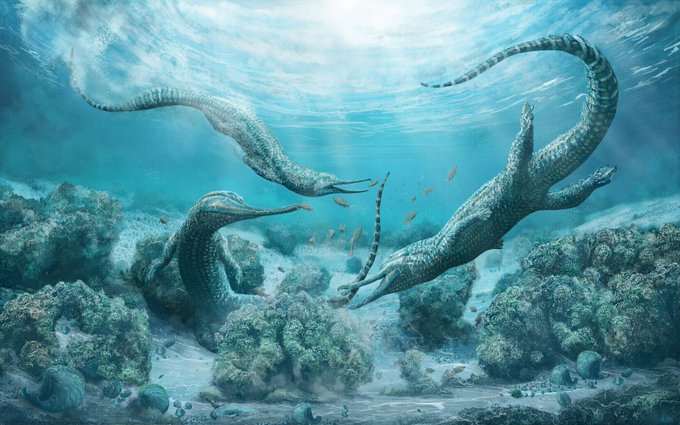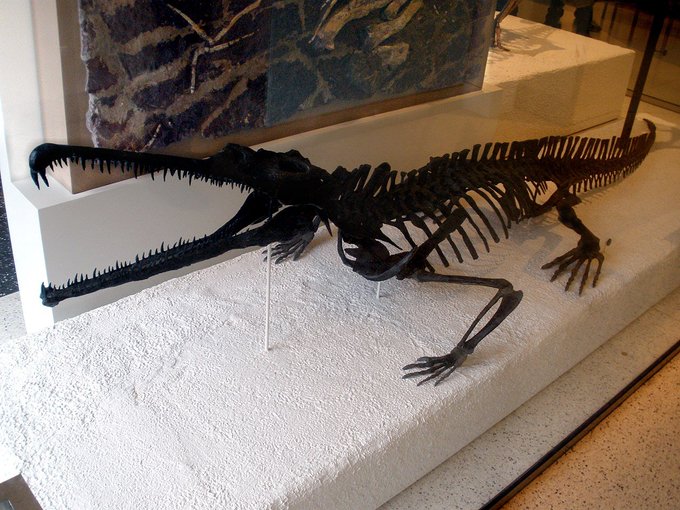phytosaurのTwitterイラスト検索結果。 9 件
Today’s #StemCroctober is Mystriosuchus Fraas 1896. These #phytosaurs, including M. westphali & M. planirostris, have a looooong slender snout & short squamosals. A 3rd one, M. steinbergeri, was added in 2019. It's from Austria & was marine! #Croctober #AtoZCrocs #StemCroctober
SMIL-ing through the pain? A specimen of the Triassic phytosaur #Smilosuchus shows evidence of extensive bone fractures and healing consistent with #osteomyelitis. In this diagram, all the indicated bones had some kind of fracture! #SciNews #FossilFriday
Another day gone by, another day without a new painting. Sigh. Here's some #FossilFriday #paleoart of the phytosaur Mystriosuchus steinbergeri to keep things ticking over.
@GatorsDaily Fun fact the crocodilian niche and body plan is so good that it convergently evolved several times in animals that aren't particularly related.
Phytosaurs are perhaps the clearest example.
This description of a new #marine species of phytosaur made a bit of a 💦splash💦 when it was first published back in May, but if you missed it check it out now in our September issue: https://t.co/UpyNDLwppI | #paleoart Copyright: @MarkWitton
Une nouvelle espèce de #Mystriosuchus, un reptile marin (et non pas un crocodile !) de 210 Ma, décrite ! Alors que les 1ers découverts vivaient en eau douce, cette espèce évoluait en milieu marin.
#Trias #Phytosauria
Source : https://t.co/4qThlMXENF via @ZoolJLinnSoc
...Anomalocaris, Smilosuchus
#paleoart #phytosaur #sciart #plaeostream
























